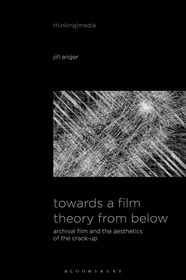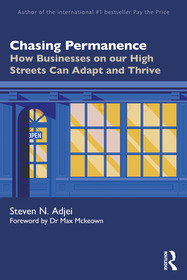
Towards a Film Theory from Below
Archival Film and the Aesthetics of the Crack-Up
Series: Thinking Media;
- Publisher's listprice GBP 28.99
-
13 849 Ft (13 190 Ft + 5% VAT)
The price is estimated because at the time of ordering we do not know what conversion rates will apply to HUF / product currency when the book arrives. In case HUF is weaker, the price increases slightly, in case HUF is stronger, the price goes lower slightly.
- Discount 10% (cc. 1 385 Ft off)
- Discounted price 12 465 Ft (11 871 Ft + 5% VAT)
Subcribe now and take benefit of a favourable price.
Subscribe
13 849 Ft

Availability
Not yet published.
Why don't you give exact delivery time?
Delivery time is estimated on our previous experiences. We give estimations only, because we order from outside Hungary, and the delivery time mainly depends on how quickly the publisher supplies the book. Faster or slower deliveries both happen, but we do our best to supply as quickly as possible.
Product details:
- Publisher Bloomsbury Academic
- Date of Publication 11 December 2025
- Number of Volumes Paperback
- ISBN 9798765107270
- Binding Paperback
- No. of pages pages
- Size 215x139 mm
- Language English
- Illustrations 63 colour illus 700
Categories
Long description:
Operating between film theory, media philosophy, archival practice, and audiovisual research, Jiri Anger focuses on the relationship between figuration and materiality in early films, experimental found footage cinema, and video essays.
Would it be possible to do film theory from below, through the perspective of moving-image objects, of their multifarious details and facets, however marginal, unintentional, or aleatory they might be? Could we treat scratches, stains, and shakes in archival footage as speculatively and aesthetically generative features? Do these material actors have the capacity to create "weird shapes" within the figurative image that decenter, distort, and transform the existing conceptual and methodological frameworks?
Building on his theoretical as well as practical experience with the recently digitized corpus of the first Czech films, created by Jan Krízenecký between 1898 and 1911, the author demonstrates how technological defects and accidents in archival films shape their aesthetic function and our understanding of the materiality of film in the digital age. The specific clashes between the figurative and material spheres are understood through the concept of a "crack-up." This term, developed by Francis Scott Fitzgerald and theoretically reimagined by Gilles Deleuze, allows us to capture the convoluted relationship between figuration and materiality as inherent to the medium of film, containing negativity and productivity, difference and simultaneity, contingency and fate, at the same time, even within the tiniest cinematic units.
Table of Contents:
List of Figures
Acknowledgments
Introduction: What Is Film Theory from Below?
1. Keep That Image Burning: Color Veil and the Cinema That Never Stops Ending
2. Do Archivists Dream of Electric Horses?: Static Electricity and the Quadruple Logic of Indexicality
3. Trembling Meaning: Camera Instability and Transduction in Archival Moving Images
4. The Milestone That Never Happened: The Scratched Kiss and the Failed Beginning of Czech Cinema
5. Touching the Film Object with Surgical Gloves: Frankensteinian Frames and the Fragile Malleability of Cinematic Faces
6. Shaping the Unshapeable?: Videographic Deformation and the First Frames of Czech Cinema
Conclusion: Digital Krízenecký Off the Scale?
Bibliography
Filmography
Supplements
Index






